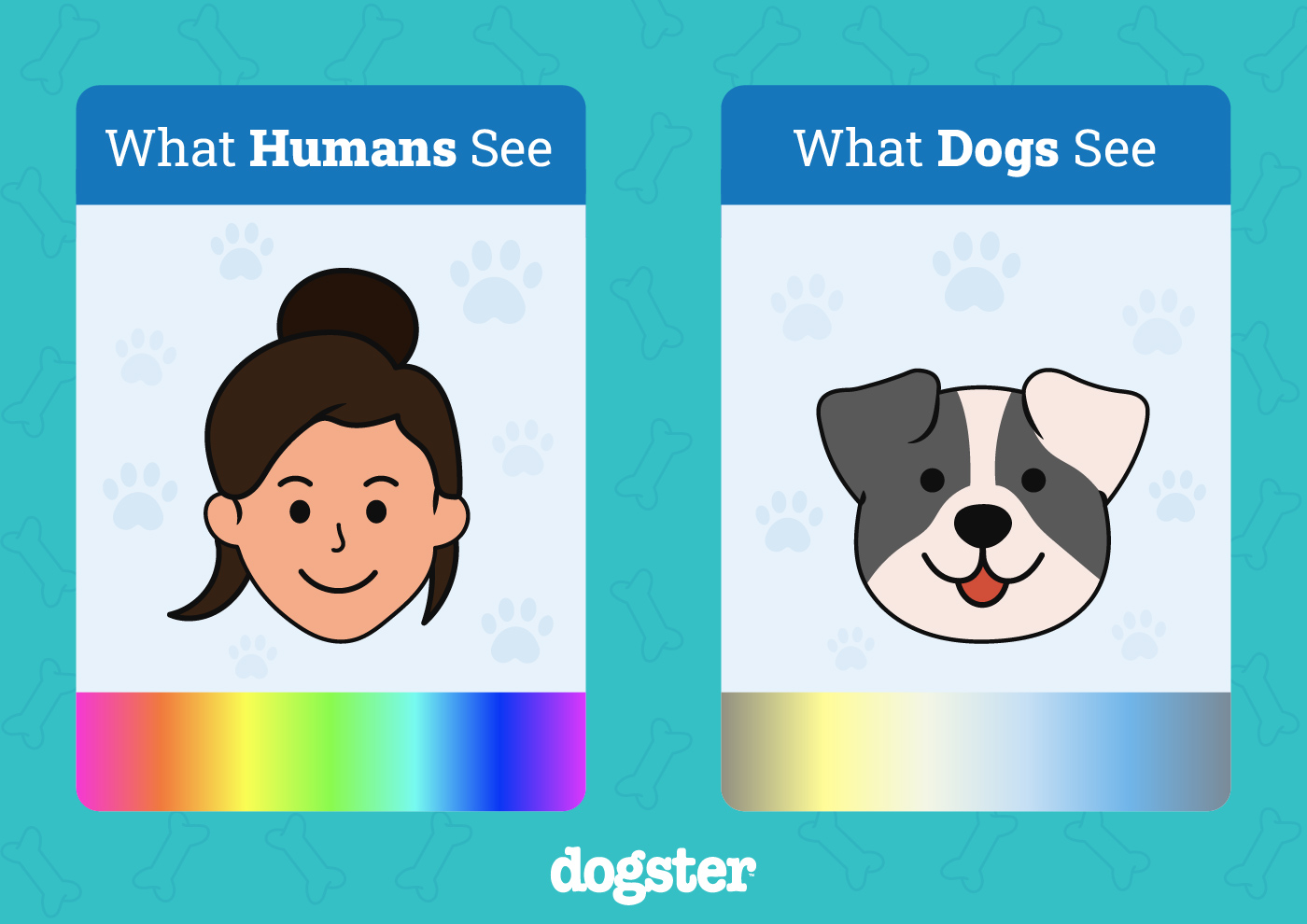Click to Skip Ahead
As children, we’re told things by family members and friends that we instantly believe as fact. Some of these tales reveal themselves over time as falsehoods or stories our parents use to make us listen better. Does the saying, your face will freeze like that, ring a bell? While this little gem may have been a complete fabrication, there are also things we hear throughout our lives that we feel are true that later are proven to be false.
One of the most common misconceptions people have is about our furry four-legged companion, the dog. People are always asking their veterinarian, neighbor, or even parents, is it true that dogs only see in black and white? For years, that answer was yes. Most people, even veterinarians, believed dogs could only see black, white, and a few shades of grey. Now, we know better. Turns out dogs can see certain colors, but not as well as we do. Let’s take a look at the world through a dog’s eyes and learn more about the spectrum of colors they see as they navigate through our lives.
How Colors Are Seen

To understand what a dog is looking at, it’s important to understand how humans, and dogs, see the colors around them. Both people and dogs see color using the nerve cells found in their eyes. Inside the eye’s retina are two types of these cells known as rods and cones. Rods are used to detect motion and light. Cones are used to distinguish between colors. The human eye has three types of cones. This allows us to recognize the colors red, blue, and green along with their combinations. Dogs, however, only have two types of cones. This allows them to see yellow and blue colors and is called dichromatic vision.
While dogs may not be able to see all the colors we can, that doesn’t mean they have bad eyesight. On the contrary, a dog’s eye has more rods than the human eye. This gives our pooches the advantage when it comes to seeing in the dark and detecting moving objects. This ability, along with their loyalty and love for their families, is another reason why canines make such great watchdogs.
Understanding Colorblindness
Yes, dogs have a degree of colorblindness but that doesn’t mean they are completely unable to distinguish colors. Colorblindness is a hindrance to the ability to see color. For humans, these inabilities are known as red-green colorblindness and yellow-blue colorblindness.
Dogs have red-green colorblindness. If you buy them a new red toy, they may struggle to see it immediately or may run past it. Eventually, however, they will realize it’s there. If the toy is yellow or blue, however, you may notice a completely different reaction from your pup considering they can pick up on those colors easier.
How Do Dogs See Colors?

You may be wondering if they don’t have access to the full spectrum of colors, and how dogs see. They may not see colors the same way we do, but they do see something. Remember the new red toy? For a dog, that toy may appear more black, grey, or brownish. Other colors like orange and green look mostly yellow while purple looks the same as blue.
With dogs having these types of issues with colors, you may wonder why they still play with the red toy or fetch the green ball. That answer is simple. Dogs don’t necessarily need to see an object’s true color to recognize what it is. Often, a familiar shape is enough to kick in their playful nature but don’t forget about those incredible noses. If a dog smells its favorite toy, it’ll be ready for a major game of fetch.
A Dog’s Visual Benefits
You may think dogs are at a disadvantage due to their inability to see colors properly, but this isn’t the case. Our canine pals have better peripheral vision than we humans do. Having eyes that are set more to the side of their head, they can see what’s happening around them better than we can.
As we mentioned above, dogs have more rods in their eyes. This helps them detect motion and see in dim light better than we can. This is also thanks in part to their shiny eyes. Our pup’s pupils dilate fully. This along with a reflective cell under their retina makes them capture more light. This makes moving around in lower light easier for them.
Conclusion
While the myth of dogs seeing in only black and white may be debunked, pet parents need to understand the range of colors they can see. This will help you choose the right toys, bowls, and other accessories for your pup’s needs. But even if you don’t choose yellow and blue for everything, rest assured that your furry friend can see colors in some form.
Featured Image Credit: Rebecca Campbell, Unsplash











